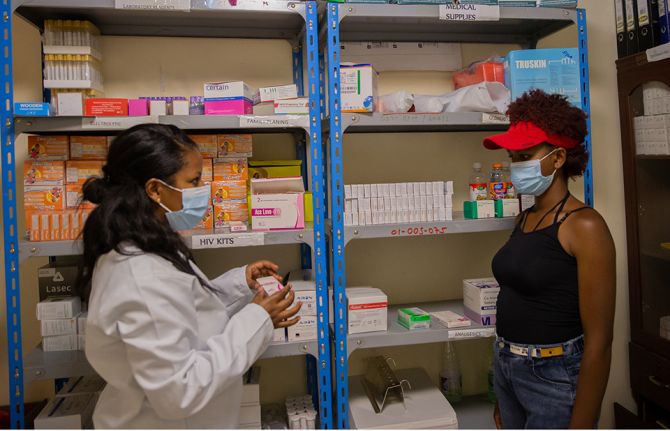

Feature Story
An opportunity to end two of the world’s deadliest infectious diseases: TB and HIV
26 September 2018
26 September 2018 26 September 2018The World Health Organization recently released its Global tuberculosis report 2018. Although it shows encouraging pockets of progress in responding to tuberculosis (TB) and HIV in some areas, it paints a rather bleak picture on ending the dual epidemics by 2030.
HIV is a relatively recent epidemic, having first been identified in the early 1980s; however, TB has been around for thousands of years. Archaeologists believe that TB affected the ancient Egyptians, with King Tutankhamun himself having possibly been affected.
Many famous people have fallen ill or died of TB over the years, including John Keats, Frédéric Chopin, Charlotte and Emily Brontë, Nelson Mandela and Franz Kafka, to name but a few. In the early twentieth century, supposed cures for TB included day-long bracing outdoor siestas in Swiss mountain sanitoriums, freezing cold showers and diets of up to 12 meals a day washed down with litres of milk and wine, and even staying in cowsheds, where the warmth and ammonia gases given off by the animals’ urine was supposedly a balm for infected lungs.
Effective medicinal treatment for TB became available in the mid-1940s and has changed little since. Today’s medicine, although toxic and antiquated, is incredibly effective and relatively cheap. However, finding people with TB to treat and ensuring that they stay on treatment poses problems and is particularly urgent for people living with HIV.
The World Health Organization estimates that in 2017 there were around 10 million people with active TB disease, 9% of whom were people living with HIV. Of the 10 million, approximately 3.6 million, or 36%, are “missing”, meaning that they may not have been diagnosed or properly treated. Among people living with HIV, the gap is wider, at 49%.
People living with HIV with latent TB are around 20 times more likely to develop active TB. Untreated TB is rapidly fatal among people living with HIV.
Fewer than 60% of TB patients are screened for TB, precluding treatment and resulting in preventable deaths. TB is the leading infectious killer globally and the leading killer of people living with HIV, accounting for one in every three AIDS-related deaths. In 2017, around 1.6 million people died of TB, including 300 000 people living with HIV.
Many breakthroughs can be achieved by improving collaboration between HIV and TB programmes to find and treat TB and HIV, including investing in diagnostics, vaccines and medicines, including preventive medicine and medicine to treat TB, including multidrug-resistant TB.
However, more commitment, investment and action are needed.
It is estimated that US$ 10.4 billion is required in 2018 for an effective response to TB in the 118 low- and middle-income countries that account for 97% of reported cases globally. The actual amount available in 2018 was US$ 6.9 billion—a shortfall of US$ 3.5 billion.
To respond effectively to HIV, UNAIDS estimates that US$ 26.2 billion will be required for the AIDS response in 2020. In 2017, US$ 21.3 billion was available in low- and middle-income countries—a shortfall of around US$ 5 billion. Only by filling the funding gaps will ending the epidemics start to become a reality.
With around 1.7 billion people, or 23% of the world’s population, infected with latent TB, of whom 5–10% have a chance of developing active TB disease, the world needs to take urgent action.
On 26 September, world leaders will come together at the United Nations in New York, United States of America, for the very first United Nations High-Level Meeting on Tuberculosis. As TB takes centre stage for one important day, the world has the opportunity to set some bold actionable targets to end two of the world’s leading infectious killers: TB and HIV.
To seize this opportunity would not only stop more than 6000 people dying every day from TB and HIV, but it would prevent new infections and bring the world a giant leap closer to improving global health, reducing poverty and achieving the Sustainable Development Goals.



